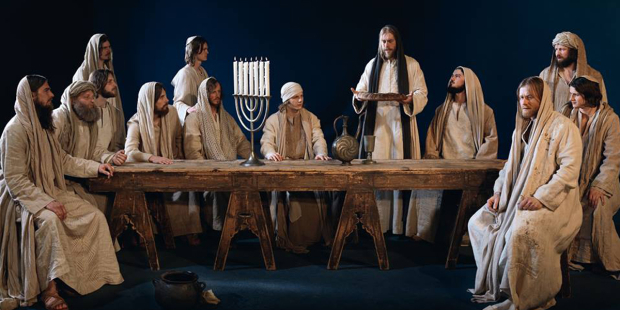Pope St. Gregory the Great started liturgical processions to combat the plague at Rome!
At the end of the 6th century, a severe plague ravaged the city of Rome, even claiming the life of Pope Pelagius II. It was a difficult time for the people of the city, and when Pope Gregory I was elected to lead the Church, he immediately set out to call upon the mercy of God.
St. Gregory the Great (as he would later be known) organized a massive procession around the city, inviting everyone to pray to God that the plague would be lifted. The Golden Legend narrates how the procession was led by an ancient image of the Virgin Mary, reportedly cleansing the air of disease.
The Roman Plague of 590 a local plague that affected the city of Rome in the year 590. It followed from the great plague of Justinian that may have killed more than 100 million Europeans2 that began in the 540s and spread to other parts of the world.
During the plague, the bishop of Rome Pelagius II died and Gregory the Great was elected his successor. Gregory had previously served as a kind of papal ambassador called an apocrisiarius to the Byzantine court where he had likely been influenced by Byzantine practices. Constantinople, which was consecrated to the protection of the Mother of God (Theotokos) had a practice whereby processions would be done through city streets of masses of the faithful that would chant psalms and kyrie eleison to console God's wrath. Gregory had likely seen these many times during his stay in Constantinople.
When the plague was in Rome in 590 and Gregory was still a deacon, he organized such a procession to take place in Rome wherein seven groups would hold processions through the streets of the city and ending at the basilica of Mary Major to ask for the Virgin's Mary protection. This was perhaps unusual at the time, since Rome was traditionally associated with St Peter's protection, but it may have been a result of Byzantine influence, since Constantinople was often put under Mary's protection during times of crisis.
The seven processional groups were: 1) clergy, 2) abbots and monks, 3) abbesses and nuns, 4) men 5) married women 6) widows and 7) children.(also perhaps including the poor of Rome)
The processions took place on April 25, 590.
The reason for the processions was because plagues and other national disasters were typically interpreted at the time as being the chastisement of God for sinfulness, and therefore to appease God's wrath, these measures were taken. Eighty people collapsed during the processions as a result of being infected by plague. St Michael the Archangel supposedly appeared with a flaming sword standing on top of Hadrian's Mausoluem (which is today known as Castel Sant'Angelo precisely because of this story) and he sheathed it when the procession approached, which was interpreted to signify that God's wrath had been turned back, and the plague supposedly stopped at that moment, following which the faithful thanked the Mother of God.
Up until 1967, the Processions on the Feast of St. Mark were held on April 25th each year! The Catholic Encyclopedia has the following to sat on Rogation Days
The liturgical celebration now consists in the procession and the Rogation Mass. For 25 April the Roman Missal gives the rubric: "If the feast of St. Mark is transferred, the procession is not transferred. In the rare case of 25 April being Easter Sunday [1886, 1943], the procession is held not on Sunday but on the Tuesday following".
In the Golden Legend, Jacobus de Varagine pens the following about St. Gregory I and the Roman Plague of 540:
And because the mortality ceased not, he ordained a procession, in the which he did do bear an image of our Lady, which, as is said, S. Luke the Evangelist made, which was a good painter, he had carved it and painted after the likeness of the glorious Virgin Mary. And anon the mortality ceased, and the air became pure and clear, and about the image was heard a voice of angels that sung this anthem: Regina cæli lætare, etc., and S. Gregory put thereto: Ora pro nobis, deum rogamus, alleluia. At the same time S. Gregory saw an angel upon a castle which made clean a sword all bloody, and put it into the sheath, and thereby S. Gregory understood that the pestilence of this mortality was passed, and after that it was called the Castle Angel.

Castel Sant'Angelo
The liturgy for the Rogation Days, during which the priest is vested in purple, begins with Psalm 43:26 --"Arise, O Lord, help us and redeem us for Thy name's sake" -- which is followed by the Litany of the Saints. At the Litany's "Sancta Maria," all stand and a procession begins, which in older times was (and still is in rural areas) usually around the boundaries of the parish, giving to the procession the name of "beating the bounds."


